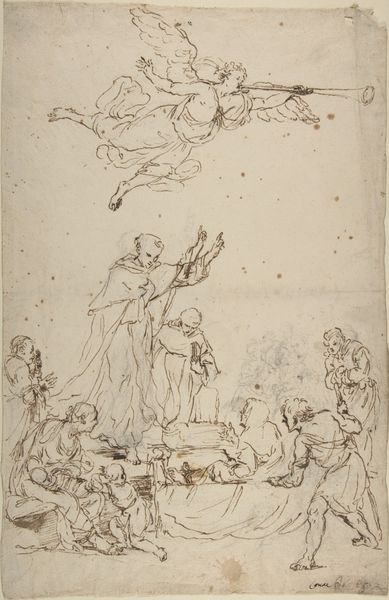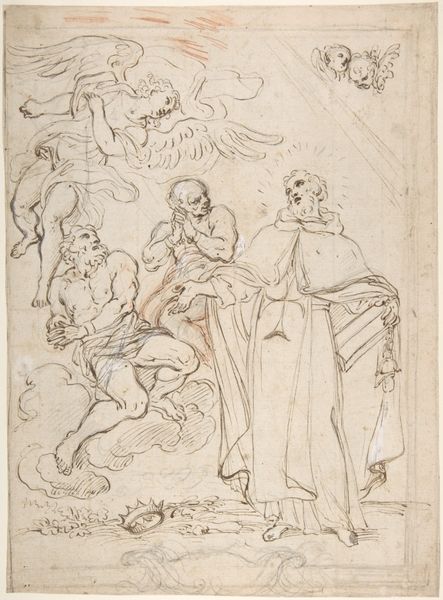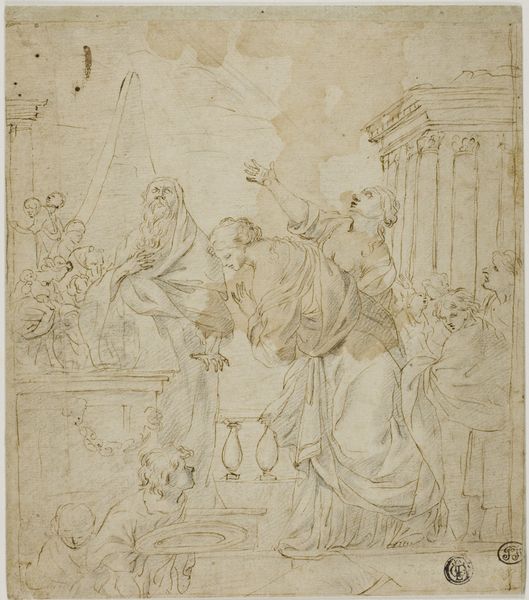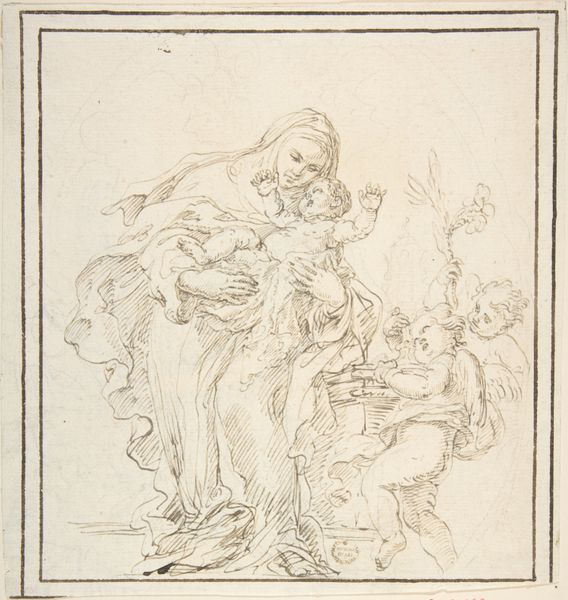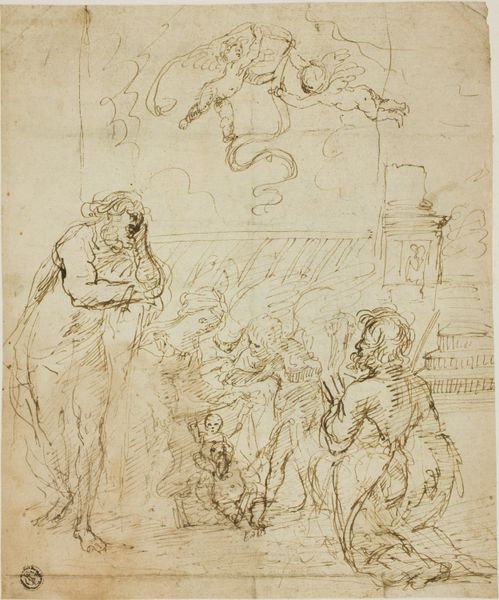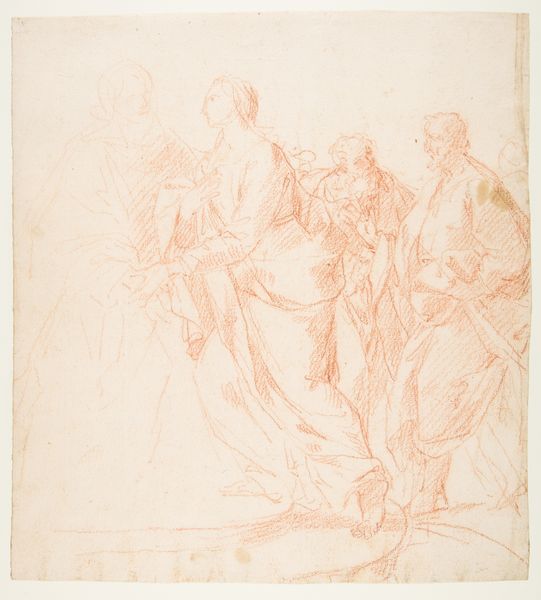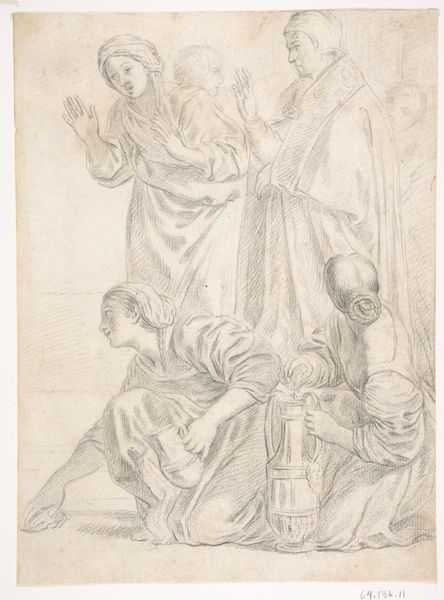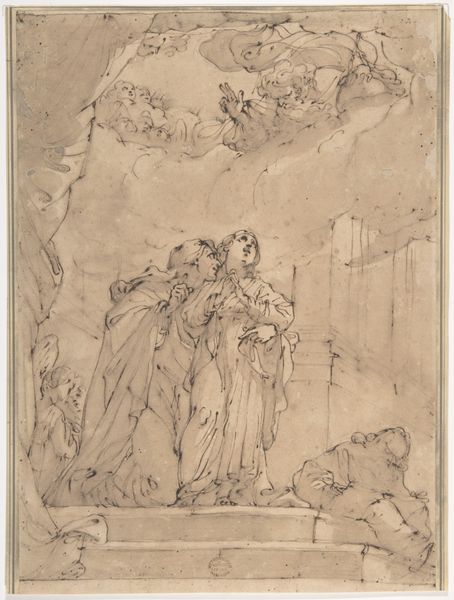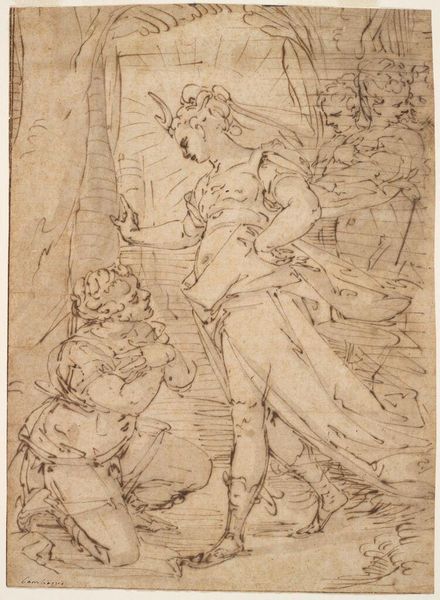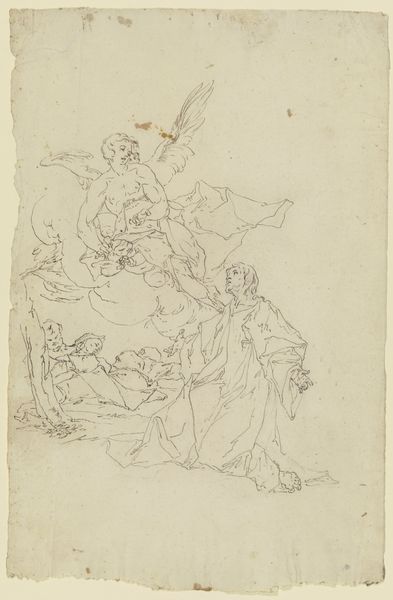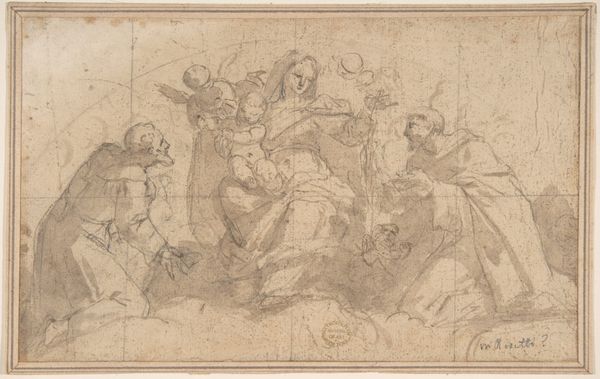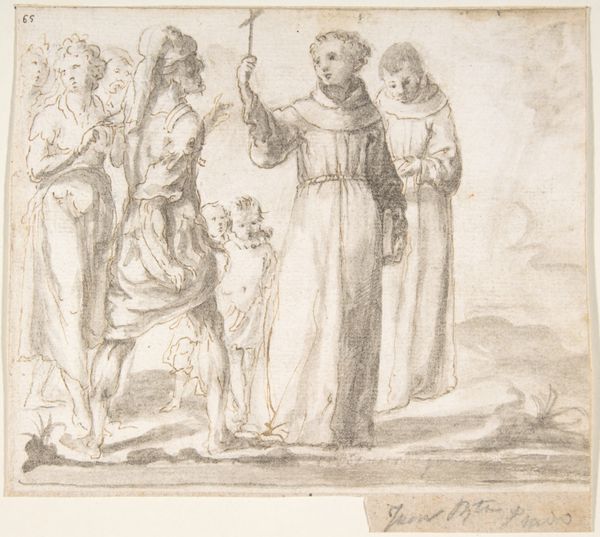
Religion Kneeling before a Monstrance, Attended by Putti 1559 - 1613
0:00
0:00
drawing, print, ink, pencil, pen
#
drawing
#
allegory
# print
#
pen sketch
#
pencil sketch
#
figuration
#
ink
#
pencil
#
pen
#
italian-renaissance
Dimensions: 8 11/16 x 7in. (22 x 17.8cm)
Copyright: Public Domain
Curator: Ludovico Cigoli, who lived from 1559 to 1613, created this pen and ink sketch entitled “Religion Kneeling before a Monstrance, Attended by Putti,” now held at the Metropolitan Museum of Art. What’s your first take on it? Editor: There’s a certain delicacy to the lines that suggests humility and devotion, yet I see the materials themselves as asserting a quiet rebellion against grand, monumental art. Pen and ink, pencil – the media here is accessible, everyday even. Curator: I love that, it’s almost like the artist is whispering a prayer onto the page. I see a story unfolding, the central figure kneeling in reverence, surrounded by putti holding symbols. Editor: Indeed. Consider the context: late Italian Renaissance. While grand religious paintings celebrated power, a drawing like this speaks to a more personal, human-scale faith. And let’s not forget the labour. Someone meticulously rendered each line, controlled the pressure, considered the absorbent property of paper... Curator: You know, it's interesting you bring up the material labor of creation, because Cigoli seemed to struggle to balance the ideals of Renaissance art with his more grounded observation of reality. He longed for ideal beauty, yet something raw and immediate always bleeds through, even in a religious allegory like this. Editor: The imperfections ARE the point, really. It's precisely through the marks, the grain of the paper, the fugitive nature of ink, that we connect with Cigoli's humanity. The religious subject matter here becomes less a divine pronouncement than an act of creation using quotidian objects. Curator: So true. It is like an echo of humbler faith. We're drawn in by the skill and imagination of it all, but the soulfulness of the gesture remains at the heart of the piece, an offering given form on paper. Editor: Exactly. By turning attention to these basic methods, the unseen infrastructure of image-making reveals art’s true meaning; making images to mediate experiences is what we can find at the core.
Comments
No comments
Be the first to comment and join the conversation on the ultimate creative platform.
